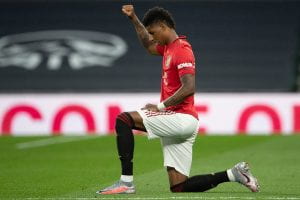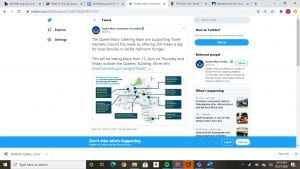Politics, protest, and school lunches; normally these things aren’t featured in the same series of events. International soccer player Marcus Rashford has brought new meaning to athletes and protest through his new June campaign aiming to tackle poverty. His campaign to increase funding for school meals during Summer, and more recently Winter recess, has been met with staunch opposition from Conservative members of parliament in England.
A primary school in Birmingham England regarded him as “determined, polite and thoughtful”, and compared him to such figures as Rosa Parks for his role in student meal advocacy. Rashford isn’t the first athlete to utilize their platform for social change, and he most certainly won’t be the last.
One of the most notable protests was during the 1968 Mexico City Olympics. With the Black Power movement combatting US racial inequality domestically, Tommie Smith and John Carlos saw their platforms, winning gold and bronze in the 200 meter dash, as a means of bringing more international attention to domestic racial inequality. As a sign of solidarity, the two Olympians bowed their heads, dawned black gloves, and raised their fists high in protest of the country they represent, but that neglected to represent them.
More recently, Colin Kapernick has been criticized for his onfield protests. The renowned quarterback has kneeled for the national anthem during games since August 2016, inspiring many athletes to do the same, and inversely creating a massive reaction and rift from within the sports world. Whether it’s the medium he chooses (football games), or the message itself (equality), people have continued to debate his actions.
This generation of athletes has kept athletics and protest cemented. With Rashford’s advocacy gaining 300,000 signatures, his resolution to fund school lunches during the Winter recess was recently voted down 322 to 261. Rashford’s ambition and advocacy has not gone unnoticed however. In response to the federal neglect of student lunches, local businesses and universities all throughout England have been making lunches for students free of charge, exposing students to more local, higher quality food. Rashford accomplished his objective in the end, but with the help of regular people rather than politicians.
Butler, Patrick, and Sally Weale. “‘He Does Not Give Up’: How Marcus Rashford Became a Hero to School Kids.” The Guardian. Guardian News and Media, 23 Oct. 2020. Web. 26 Oct. 2020.
Hawkins, Emily. “Local Businesses, Councils Promise Free School Meals after Rashford Campaign.” Reuters. Thomson Reuters, 23 Oct. 2020. Web. 26 Oct. 2020. <https://www.reuters.com/article/uk-soccer-england-mun-rashford/local-businesses-councils-promise-free-school-meals-after-rashford-campaign-idUSKBN2780ZS>.
https://twitter.com/QMUL/status/1321070332556517376
Sheehan, Joseph M. “Olympics Ouster.” The New York TImes 16 Oct. 1968. The New York Times. Web. 2020. <http://archive.nytimes.com/www.nytimes.com/packages/html/sports/year_in_sports/10.16a.html?scp=2&sq=smith%2520international&st=cse>





Hi Giancarlo!
This was really interesting especially as we have seen with the most recent NBA season the players were wearing statements that related to social justice and the Black Lives Matter movement after the tumultuous summer in the US. Athletes are letting their voices be heard more as they are starting to realize the effect they can have on their fans and how they have the power and capital to create the changes they want to see. A great example of this is Lebron Jame’s I Promise School which has provided a good elementary level education for at-risk children. While right now, it only serves third and fourth graders, when it if fully operational in 2022, it will serve grades 1-8. This was a great post!